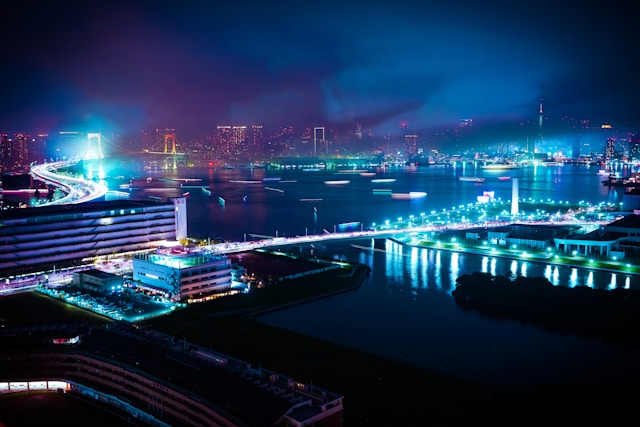As urban populations continue to rise, the demand for sustainable urban development has never been more pressing. Cities around the globe are turning to green technology innovations to address environmental challenges, enhance quality of life, and build sustainable futures. These advancements are redefining urban landscapes and paving the way for smarter, more eco-friendly cities.
Why Green Technology is Essential for Smarter Cities
Environmental Preservation
The increasing levels of urban pollution and resource depletion necessitate sustainable practices. Green technologies help reduce emissions, conserve energy, and protect natural ecosystems, ensuring cities remain habitable for generations to come.
Economic Efficiency
Sustainability and economic efficiency go hand in hand. Green technologies, though initially costly, often lead to significant savings in energy, water, and waste management, making them a viable long-term investment for urban areas.
Enhanced Quality of Life
By adopting sustainable solutions, cities can improve air and water quality, reduce noise pollution, and create greener, healthier living environments. This fosters greater well-being for urban residents.
Key Innovations in Green Technology
1. Renewable Energy Integration
Smarter cities are heavily investing in renewable energy sources such as solar, wind, and hydroelectric power. These sustainable energy systems reduce dependence on fossil fuels and promote a cleaner environment.
- Solar-Powered Buildings: Urban centers are increasingly adopting solar panels on rooftops to harness energy from the sun, powering homes, offices, and public facilities.
- Wind Turbines in Urban Areas: Compact and efficient wind turbines are being installed to generate clean energy in metropolitan settings.
2. Green Transportation Systems
Transportation is one of the largest contributors to urban carbon emissions. Green tech solutions by trafficlike are transforming urban mobility.
- Electric Vehicles (EVs): EVs are becoming mainstream, with extensive charging infrastructure being developed in cities worldwide.
- Shared Mobility Platforms: Bike-sharing and electric scooter systems reduce congestion and emissions while promoting a healthier lifestyle.
- Public Transit Innovations: Green buses powered by electricity or hydrogen fuel cells are being introduced, reducing reliance on diesel-powered fleets.
3. Smart Waste Management
Waste management is a critical challenge for cities, but green technology is making it smarter and more efficient.
- AI-Driven Waste Sorting: Artificial intelligence is being used to sort recyclables and non-recyclables, improving recycling rates and reducing landfill waste.
- Composting Solutions: Cities are implementing composting programs to turn organic waste into valuable resources like fertilizer and biogas.
- IoT-Based Smart Bins: These bins use sensors to monitor fill levels and optimize waste collection routes, reducing fuel consumption and operational costs.
4. Vertical Gardens and Green Roofs
Urban areas are combating the loss of green spaces by integrating greenery into buildings and infrastructure.
- Vertical Farming: Skyscrapers are now hosting vertical farms that grow fresh produce, reducing the need for long-distance transportation.
- Green Roofs: Roof gardens improve insulation, reduce urban heat islands, and manage stormwater runoff effectively.
The Role of Smart Cities in Sustainability
Data-Driven Urban Planning
Smart cities use data analytics and IoT (Internet of Things) devices to monitor energy usage, traffic patterns, and waste levels. This information is used to design efficient systems that minimize resource wastage.
Smart Grids
Electricity grids are being upgraded to smart grids that balance energy supply and demand in real-time. These grids integrate renewable energy sources seamlessly and ensure efficient energy distribution.
Water Conservation Technologies
Innovations like smart irrigation systems, rainwater harvesting, and water recycling plants are helping cities manage water resources more sustainably.
Benefits of Green Tech for Urban Areas
1. Reduced Carbon Footprint
Green technologies significantly cut greenhouse gas emissions, contributing to the fight against climate change.
2. Cost Savings for Cities
Efficient energy use, reduced waste, and smart transportation systems lower operational costs, freeing up funds for other development initiatives.
3. Healthier Communities
Cleaner air, reduced noise, and increased green spaces lead to healthier lifestyles and improved mental well-being for city dwellers.
Challenges in Adopting Green Technology
Despite the numerous benefits, implementing green tech innovations is not without challenges:
High Initial Costs
The infrastructure required for green technologies can be expensive, deterring cities from investing in them despite long-term savings.
Resistance to Change
Cultural and institutional inertia often slows the adoption of new, sustainable practices. Educating stakeholders about the benefits of green tech is crucial.
Technological Integration
Integrating new technologies with existing urban systems can be complex, requiring significant planning and expertise.
Future Trends in Green Technology for Smarter Cities
1. AI-Enhanced Sustainability
AI will play a pivotal role in optimizing resource use, predicting maintenance needs, and designing sustainable urban layouts.
2. Autonomous Green Transport
Autonomous vehicles powered by renewable energy will revolutionize urban transportation, making it more efficient and eco-friendly.
3. Carbon Capture Technologies
Innovative carbon capture and storage solutions will help cities offset their carbon emissions, moving closer to achieving net-zero goals.
Conclusion
Green technology is the cornerstone of building smarter, more sustainable cities. By embracing renewable energy, eco-friendly transportation, smart waste management, and innovative urban planning, cities can address environmental challenges while enhancing the quality of life for their residents. Though challenges remain, the continued advancement of green technologies promises a brighter, more sustainable urban future.
Photo by Alex Knight on Unsplash (Free for commercial use)
Image published on August 12, 2018




